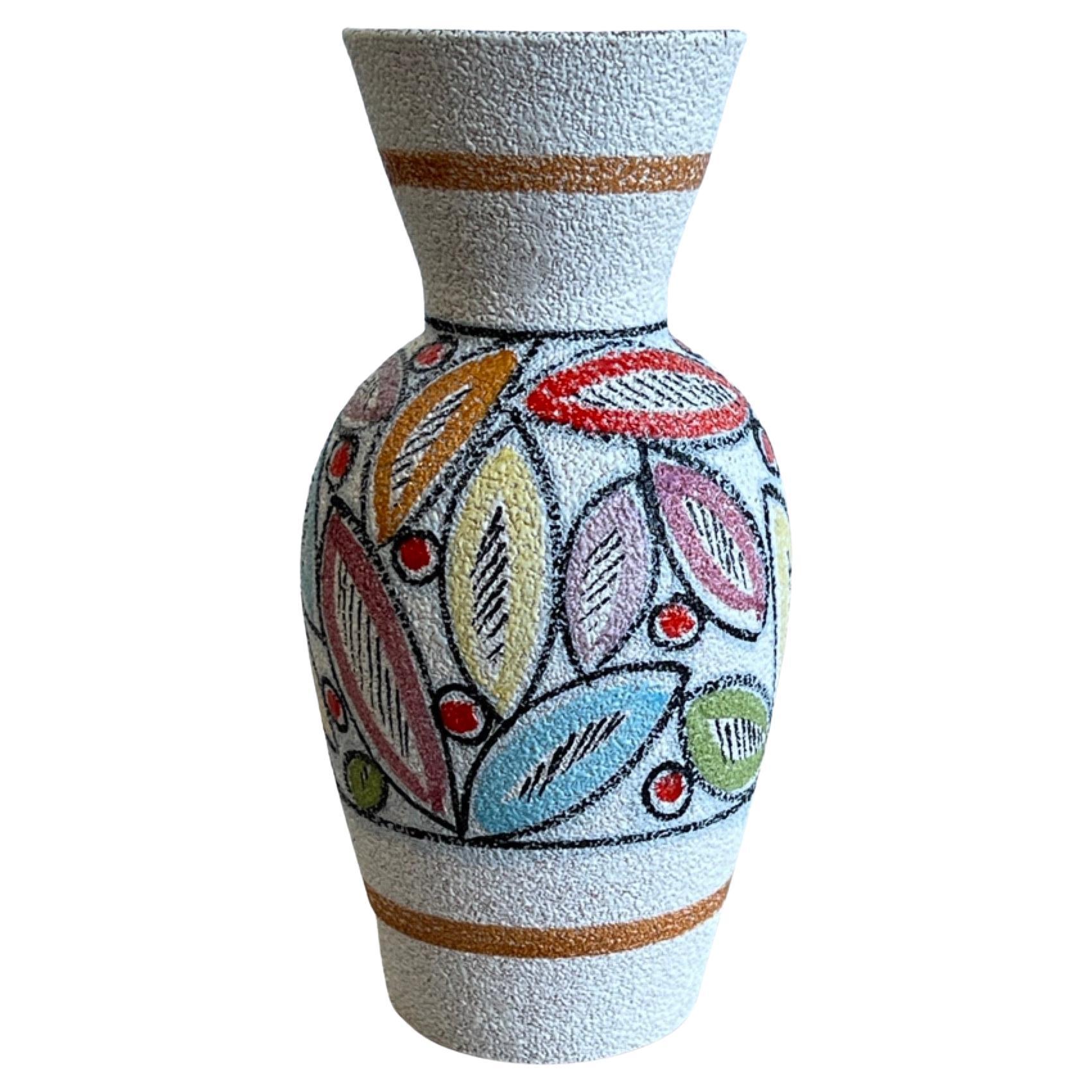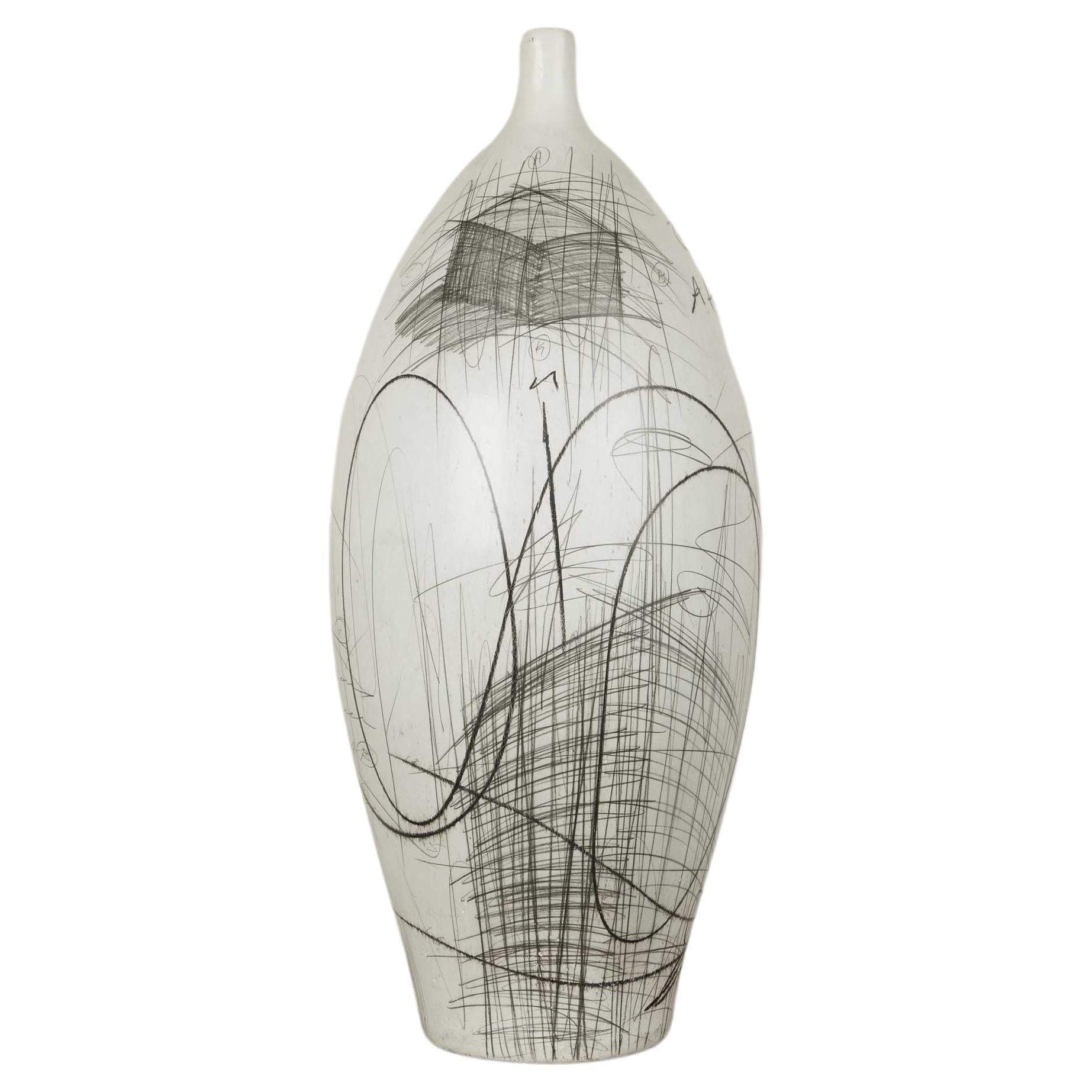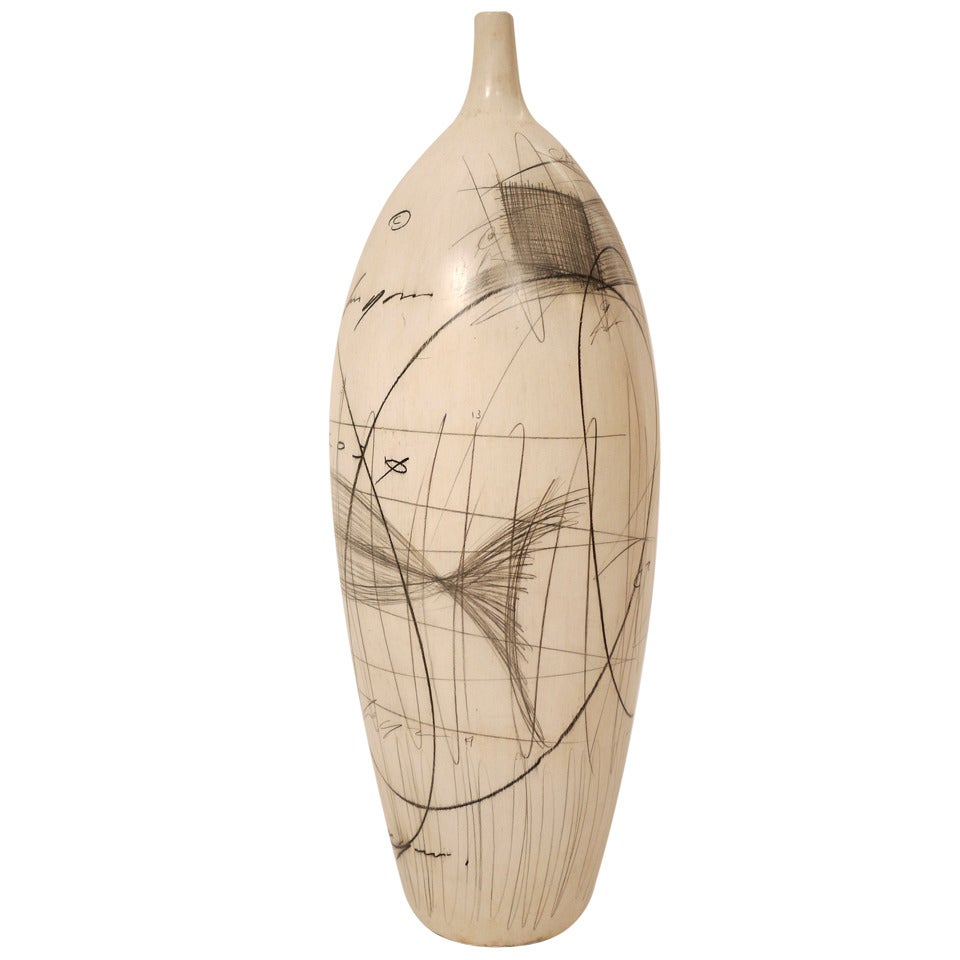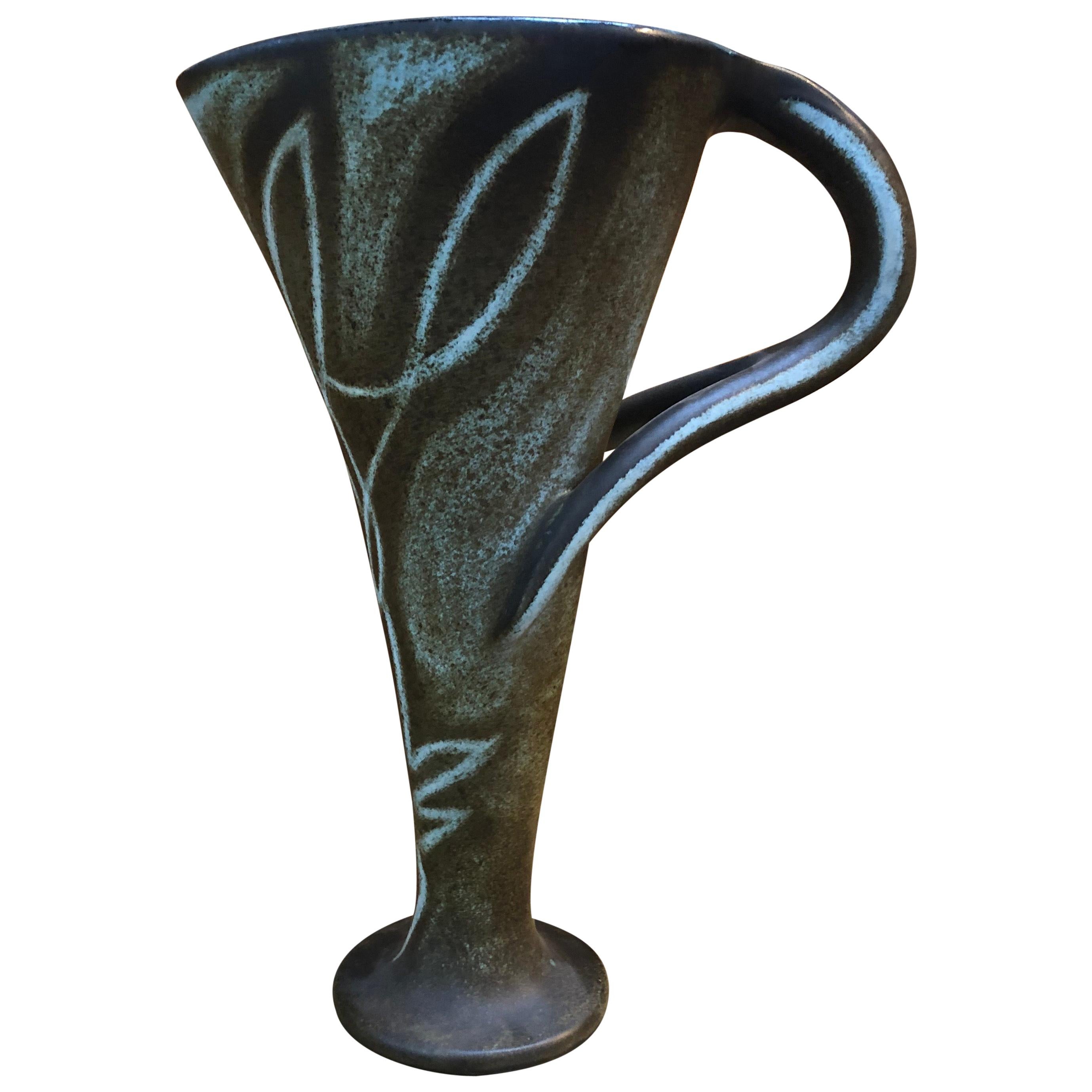Items Similar to "Iguana" Mexican Ceramic vase signed by Jorge Wilmot
Want more images or videos?
Request additional images or videos from the seller
1 of 5
"Iguana" Mexican Ceramic vase signed by Jorge Wilmot
About the Item
Reinventing Guadalajara ceramics: the legacy of artisan Jorge Wilmot
Eight years after his death, the legacy of ceramics artisan Jorge Wilmot lives on in the establishment of the Guadalajara metro area as a source for world-class ceramics. His fusion of art, technology and design elements from the past reinvented the working of clay.
Wilmot was born in Monterrey, Nuevo Leon, in 1928. He studied fine art at the Academy of San Carlos in Mexico City for only a few months in 1948, returning to work in Monterrey, where one job was in a factory making dishes.
In the 1950s, he made the important decision to go to Europe to study ceramics in France, Sweden, and Switzerland. Here he discovered Asian techniques, in particular crackled glaze, that would appear in much of his later work.
Upon returning to Mexico, he had an exhibition in Monterrey in 1958. This led to contacts with cultural authorities in Mexico City, where he discovered the traditional burnished pottery of Tonalá, Jalisco.
What is now a suburb of Guadalajara has had a very long history of fine ceramic and pottery work since before the arrival of the Spanish. Its large clay deposits are among the highest quality in Mexico.
By 1960, Wilmot was setting up shop in Tonalá. His goal was to create a new kind of ceramic, based on the traditional wares, but integrating Asian and modern elements in both technique and design. One of his first steps was to work with the local craftsmen to both learn from them and to work toward conserving centuries-old traditions.
After mastering that, he set about using his international training and experience. One main change he made was to use gas-fired kilns on a large scale.
In 1960, Wilmot met American ceramicist Ken Edwards who had also come to Tonalá to develop new pottery. However, Edwards was interested in doing his own thing, a very heavily Oriental-influenced work, rather than reinvent local traditions.
After much trial and error, Wilmot’s workshop developed a distinct inventory. His work had Mexican motifs as a base, but with Asian elements in both technique and design, especially glazes.
It is rather austere compared to native Tonalá pottery, which often attempts to fill in all available space with tiny decorative elements because of its Baroque heritage.
The new work gained acceptance at fine galleries in various cities in Mexico and abroad, especially in Europe, Japan, and the United States. It caught the attention of the head of the minister of culture at the time, Fernando Gamboa, and the business expanded exponentially.
From then until his death in 2012 he would receive various accolades and have exhibitions of his work in some of the world’s most important venues.
Despite his work in reinventing Tonalá ceramics, he continued to be dedicated to preserving the old traditions. In 1986, he established the National Ceramics Museum (Museo Nacional de la Cerámica) in his former house and donated it to the municipality of Tonalá.
The museum still exists with an important collection of work from the pre-Hispanic period to the present.
Perhaps more importantly he established a school that trained generations of ceramicists in the new techniques and designs he introduced, most notably stoneware and other high-fire work. So many craftspeople benefitted from this that almost all of the ceramic that is not strictly traditional shows influence from him. It is one of the main reasons why Jalisco has some of the best artistic production in Mexico.
Workshops that are Wilmot’s “heirs” include Cerámica Netzi in Tonalá and Cerámica (Noé) Suro in Guadalajara. But his influence goes even further. The metro area now has a reputation for fine ceramic in general, attracting designers and master craftsmen to open workshops and design new products. One example of this is the Japanese-inspired work of The Norm in Tlaquepaque.
While Mexican ceramics have a reputation for timelessness, in reality the 20th century was a time of great innovation. Wilmot’s contribution is extremely important because he was able to innovate while maintaining respect for the past.
- Creator:Creators of Objects (Artist)
- Dimensions:Height: 7.88 in (20 cm)Width: 8.27 in (21 cm)Depth: 4.14 in (10.5 cm)
- Style:Primitive (In the Style Of)
- Materials and Techniques:
- Place of Origin:
- Period:
- Date of Manufacture:Circa 1960
- Condition:Wear consistent with age and use.
- Seller Location:BARCELONA, ES
- Reference Number:1stDibs: LU9391239278522
About the Seller
New to 1stDibs
Joined in the past six months.
No Reviews Yet
Vetted Seller
These experienced sellers undergo a comprehensive evaluation by our team of in-house experts.
1stDibs seller since 2023
Typical response time: 1 hour
- ShippingRetrieving quote...Ships From: Barcelona, Spain
- Return PolicyA return for this item may be initiated within 7 days of delivery.
More From This SellerView All
- Enameled Ceramic Vase by M. Millet, 1980sLocated in BARCELONA, ESInvesting in this Enameled Ceramic Vase signed by M. Millet, originating from the 1980s, presents a compelling opportunity to own a piece of unique artistic expression. Crafted with ...Category
Vintage 1980s Spanish Art Deco Vases
MaterialsEnamel
- A mid-century ceramic glazed vase by Atelier SerraBy Cerámica SerraLocated in BARCELONA, ESPurchasing this Mid-Century ceramic glazed vase by Atelier Serra is an opportunity to bring a touch of timeless elegance and artistic flair into your home. Atelier Serra, known for i...Category
Mid-20th Century Spanish Mid-Century Modern Vases
MaterialsCeramic
- Large Glazed Ceramic Vase by Atelier Primavera, 1950sBy Atelier Primavera au PrintempsLocated in BARCELONA, ESA large glazed ceramic green vase by Atelier Primavera, hailing from the 1950s, is a masterpiece that epitomizes mid-century ceramic artistry. Crafted by the prestigious Atelier Prim...Category
Vintage 1950s French Art Deco Vases
MaterialsCeramic
- Ceramic Vase by Gio Ponti for Richard Ginori, 1930sBy Gio Ponti, Richard GinoriLocated in BARCELONA, ESImmerse your space in the timeless elegance of Gio Ponti's Ceramic Vase for Richard Ginori, a masterpiece from the 1930s. Ponti, a maestro of design, lends his artistic finesse to th...Category
Vintage 1930s Italian Art Deco Vases
MaterialsCeramic
- An Iridescent glass vase signedLocated in BARCELONA, ESThis iridescent glass vase, bearing a signature, holds a unique charm and significance. Its beauty lies not only in its mesmerizing iridescence, which reflects a spectrum of colors i...Category
20th Century Mid-Century Modern Vases
MaterialsArt Glass
- A Mid-Century Steuler Keramik ceramic vaseBy SteulerLocated in BARCELONA, ESInvesting in this Mid-Century Steuler Keramik ceramic vase offers the opportunity to own a piece of design history that seamlessly merges form and function. Steuler Keramik, renowned...Category
Vintage 1960s German Mid-Century Modern Vases
MaterialsCeramic
You May Also Like
- Ceramic Sculpture Vase by Weiss, Signed 1972Located in Piacenza, ItalyPetra Weiss, born in Cassina d'Agno near Lugano, feeling this call of the sea innately, in Tremona, lives the artistic atmosphere of the atelier of a great Swiss sculptor, whom I had...Category
Vintage 1970s Swiss Mid-Century Modern Vases
MaterialsCeramic
- Ceramic Vase by Guieba, Signed, 1980-1990By Charles-Henri GuiébaLocated in Saint-Ouen, FRA ceramic vase by CH- Guieba. Wood firing. Perfect original conditions. Signed under the base, circa 1980-1990. Unique piece.Category
20th Century French Beaux Arts Vases
MaterialsCeramic
- Italian Ceramic Vase Signed by Italy G3Located in Byron Bay, NSWItalian Ceramic hand painted vase 1950s. Magnificent vase hand painted with colourful abstract leafs, amazing ceramic texture.Category
Vintage 1950s Italian Mid-Century Modern Vases
MaterialsCeramic
- YURI ZATARAIN, Ceramic Vase, circa 1990, Mexico.By Yuri ZatarainLocated in Santa Monica, CAYURI ZATARAIN, Ceramic Vase, circa 1990, Mexico, comes with white marble base 6" x 6" x 2" h Crafted in the 1990s in Mexico, this exquisite vase is a remarkable piece from the early...Category
1990s Mexican Minimalist Vases
MaterialsCeramic
- YURI ZATARAIN, Ceramic Vase, circa 1990, Mexico.Located in Madrid, ESYuri Zatarain ceramic vase. An unique piece edition. Porcelain colored glaze covered by pencils drawings. Signed by author. Artist Early work of,...Category
1990s Mexican Minimalist Ceramics
MaterialsCeramic
- Large Ceramic Vase Signed AccolayBy J. C. AccolayLocated in Saint-Ouen, FRA large ceramic pitcher vase green red inside by Accolay.Category
Mid-20th Century French Modern Vases
MaterialsCeramic
Recently Viewed
View AllMore Ways To Browse
Ceramic Art Deco Vessels
Antique American Vases
La Verre
Black Palace Vase
Large White Ceramic
Vintage Italian Large Glass Vases Red
Loetz Iridescent Glass Vase Austria
Turquoise And White Pottery
Arrow Vase
Chinese Cloisonne Floral Vase
White Crackle Glaze Vase
Chinese Vase Children
Coki Barbieri
Japanese Antique Wabi Sabi Pottery
Ceramic Wall Hanging Vase
Covered Amphoras
Harvey Ceramic
Chinese Song Dynasty Pot





